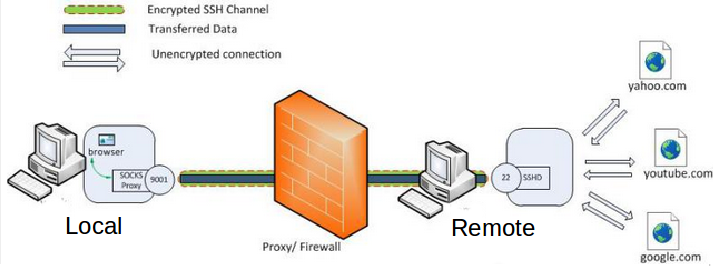
- Ssh proxy host install#
- Ssh proxy host update#
- Ssh proxy host verification#
- Ssh proxy host password#
NOTE: Be aware that ignoring the server fingerprint can be a security risk!ĪWS EC2 hosts are ephemeral and can be recreated at any time. Providing the user name in the command line: ssh -l ubuntu ubuntu-box.aws Your ssh connection will then default to be done with the remote use ec2-userĪnd if you have a server with a different user you can still change it by You can combine the rules with the User directive: Host *.aws # Pretend that our servers all end with. Ubuntu while AWS EC2's Amazon Linux 2 use ec2-user.

You can set the default user name, for instance Ubuntu servers use the username If your AWS EC2 instances are all of the same OS or if most are of the same OS You can customize your ssh connections to your liking. Prox圜ommand aws-ssh-proxy -prefix aws- %h %p The suffix can be anything, in fact it can be even a prefix and it would work aws suffix is used only for telling which ssh configuration section to Wit this we can now have the following host names in AWS:Īnd we can ssh to them with ssh webserver-dev.aws and ssh mysql-dev.aws. aws %h %p # Tell ssh to use aws-ssh-proxy to establish the connection Nor to have your server names with that domain.Īll that you need is to build a rule so that ssh can match connections to thereĪnd to instruct it what to do: Host *.aws # Pretend that our servers all end with. aws and toīuild an ssh rule that matches that domain. The idea is to pretend that you own a given domain, for instance. You can achieve this by simply tricking ssh into believing that all It is best is you restrict the usage to aws-ssh-proxy to only the hosts that are It is suggested that you read the next section and setup your own configuration. In theory the following configurationĪlthough the previous configuration will work it will probably create problems. Modify your ssh configuration ( ~/.ssh/config) so that Prox圜ommand uses This usually means that you have the following environment One who's name matches the hostname passed in parameter.įor the program to work you will need to have your environment setup in order to This program will then search the list of AWS EC2 instances that are running for

To establish the connection to the remote host. This will instruct ssh to request at the program passed In order to use this command with ssh it is required that the argument See the rest of the document for a more elaborate setup.
Ssh proxy host update#
You might want to update your ssh configuration with a more specific rule. Then update your ssh configuration ~/.ssh/config with: Host *
Ssh proxy host install#
To install it run: pip install aws-ssh-proxy Use these names as functional host names recognized by ssh and any other command The idea is that AWS EC2 instance names used will have a more memorable name Instance names instead of having to remember the random public DNS names used by
Ssh proxy host verification#
Support Google Authenticator and Authy for two-step verification Support public-key, password, keyboard-interactive and multi-factor authentication methods Connecting through SOCKS5 / SOCKS4 / HTTPS proxy with authentication Whitelist, only sites on the list will be accessed through the proxy server, other sites will be connected directly
Ssh proxy host password#
Remember SSH login password & private key passphrase in OS X Keychain automatically Automatically reconnect after disconnected by errors or waking up from sleep

Fast switch between multiple SSH accounts Create HTTP, HTTPS, SOCKS4/4A and SOCKS5 proxy through SSH tunnel

Furthermore, SSH Proxy is designed to automatically reconnect when your Mac is waking up from sleep. SSH Proxy is able to remember the SSH login password & private key passphrase and save it to OS X's keychain. SSH Proxy can help you turn any remote SSH server into a SOCKS / HTTPS proxy, intuitive and easy to use.


 0 kommentar(er)
0 kommentar(er)
